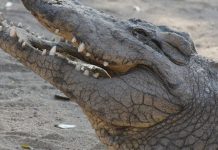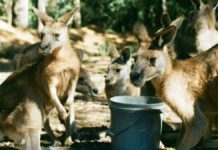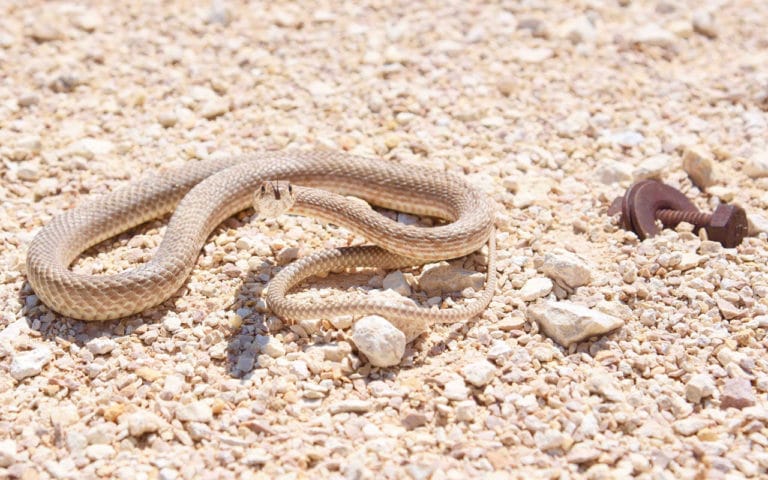
It is well known, the snake is one of the most dangerous animals of the Australian fauna. Indeed, Australia is home to the most venomous snakes on the planet. This country has 12 species of venomous snakes with a venom potentially lethal to humans. Although the idea of encountering a snake can be intimidating, understanding and respecting these reptiles is crucial for any adventurer in Australia. In the event of a bite, be aware that anti-venom is available for all Australian snake species. In reality, the most important factor is access to treatment, especially if the bite occurs in the middle of the bush. So it’s best to take a universal anti-venom with you, and keep your eyes open when you’re out in the wild!
Table of Contents
Where are the snakes in Australia?
Snakes in Australia are present in the majority of the territory except for the highest altitudes. We can meet them in all types of environment, tropical forest, subtropical forest, arid desert, wooded plains, around lakes, rivers, agricultural, peri-urban and urban and even in the ocean!
Like all reptiles, snakes need to thermoregulate to maintain their body temperature at 30 °. Depending on the geographical area, some are seasonal. They will be active during the hottest and virtually inactive during the coldest months. However, these rules vary from one species to another and from one family to another, as does their period of daily activity. For example, the most common pythons in Australia are mostly nocturnal. But they can be seen in the early morning basking on a rock in the sun. While brown snakes and snake tigers will only be active during the day.
Snakes play an essential role in Australian ecosystems. As predators, they help control populations of rodents and other small animals, helping to maintain the natural balance.
How to avoid an encounter with a snake
- Be Vigilant: When hiking, be careful where you put your feet and hands.
- Stay on marked trails: Snakes tend to avoid frequented areas.
- Avoid Risk Areas: Like woodpiles, leaf piles and rocky areas.

The main species of snakes in Australia
Australia is home to around 140 species of land snake, many of them venomous. However, encounters with snakes are relatively rare, and fatal bites even more so. The best-known species include the taipan snake, the eastern brown snake and the tiger snake.
Taipans
Taipans belong to the genus Oxyuranus. There are 3 species in Australia: Inland Taipan (Oxyuranus microlepidotus), Coastal Taipan (Oxyuranus scutellatus) and the Western Desert Taipan (Oxyuranus temporalis).
The taipans can reach a height of 2 meters. Their colors vary according to the period and the temperature during the year. They tend to be pale during the warmer months and much darker during the colder months of the year.
Inland Taipan
Characteristics
Inland Taipan is considered the most venomous snake in the world. But you will have very little chance to meet him because he lives in remote areas. Because of its rank in the classification of venomous species, many specialists have tried in vain to find it. It can hide in the crevices of the desert and come out only on rare occasions.
Habitats
Its distribution area is very localized. He lives in arid deserts like the desert of Simpson or in the desert plains next to Coober Pedy.
Coastal Taipan
Characteristics
Coastal Taipan, although less venomous than Inland Taipan, remains in 3rd place in the ranking of the most venomous snakes. He can be very aggressive if he feels threatened … He is extremely quick.
Habitats
It is found on the northern and northeastern part of the country south of Brisbane. He lives in different habitats such as open forests or sugar cane fields.
Brown Snakes
The famous brown snakes are one of the most known snakes in Australia. Pseudonaja comprising 9 species in Australia which are distributed throughout the country. The 2 best known are Eastern Brown Snakes (Pseudonaja textilis) and Western Brown Snake or Gwardar (Pseudonaja mengdeni).
Characteristics
The Eastern Brown Snake is the snake responsible for the largest number of envenomations in Australia. He is the 2nd most venomous snake in the world. This snake operates during the day and can reach more than 2m and whose color and patterns vary from one individual to another. It can range from very dark brown to almost black to very pale brown. The head is often paler than the rest of the body.
It is a very nervous snake and flees at the sight of humans. On the other hand, if he is surprised, he will tend to stand on his own. Indeed, he is able to be aggressive to intimidate. However, he will not try to bite unless there is an aggressive response from the person. As with all snakes in Australia, there is no reason to attack a human. Unless it is provoked, but its proximity and presence in rural areas do not play in his favor.
Habitat
The distribution area of Eastern Brown Snake is very large and includes most of the eastern part of the country. It can be found in all types of habitat except tropical and subtropical forests
Tiger Snakes
Tiger snakes are the 2nd type of snake to cause the most envenomation in Australia. They belong to the genus Notechis and there is only one species in the territory, Notechis scutatus. Each population, depending on its location, is considered a subspecies. The subspecies Notechis scutatus scutatus (VIC, NSW, QLD) is considered the 4th most venomous snake in the world.
Characteristics
Its color varies from one to another. Its name comes from the fact that it can be very dark dotted with yellow stripes. But the majority of tiger snakes have no patterns, ranging from very dark brown to pale yellow-brown.
It can measure from 1 to 2m with a fairly wide shape. One of his characteristics is that his body is flat at the base of the head. So when he stands in a position of intimidation it gives him false airs of cobra.
Habitats
The Tiger snake is present only in the southern part of the country, from Cervantes to Espérance for WA, and more or less from Smoky Bay in SA and all along the coast and inland, except for drylands up to Bundaberg in Queensland. It has a preference for aquatic environments, such as ponds, lakes and rivers. It is therefore not uncommon to meet him in agricultural circles such as meadows with cows that are often marshy in the south of the country.
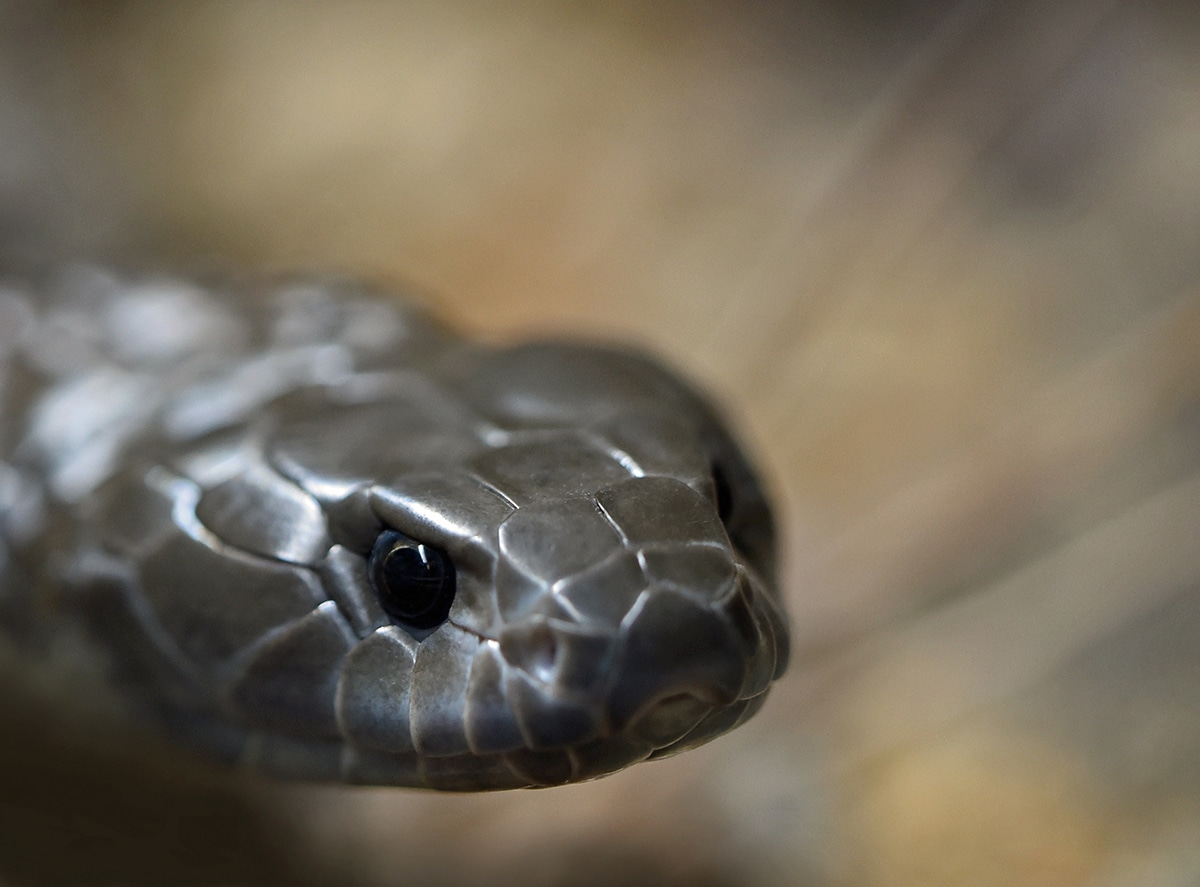
Death Adder
Death adder or vipers of death (which in reality are not vipers) all belong to the genus Acanthophis. There are 7 species in Australia and they are found in the vast majority of the country. All of these species are potentially deadly. The most widespread on the territory is the Common death adder (Acanthophis antarcticus). It ranks 10th in the ranking of the most venomous species in the world.
Characteristics
It is a fairly small snake, usually about sixty centimeters with a maximum of 1m to 1.20m for larger species. It has a relatively stocky shape. The coloration varies according to the species but its colors are generally an alternation of stripes in perfect adequacy with the environment in which it evolves. Thus the species of the center are often of a mixture of brown-red-orange colors.
Another interesting fact is that this snake is the fastest in the world!
This snake is calm, it moves only very little and only at night. He prefers to ambush his prey by confusing himself in his environment. He is able to use the tip of his tail as a lure to attract small vertebrates. It is this placid behavior and camouflage that make this snake dangerous. Bites usually occur because the snake seeks to defend itself.
Habitats
The majority of species occur at night in fairly dry climates such as desert, rocky or open forests. Some species, however, can be found in tropical or subtropical forests.
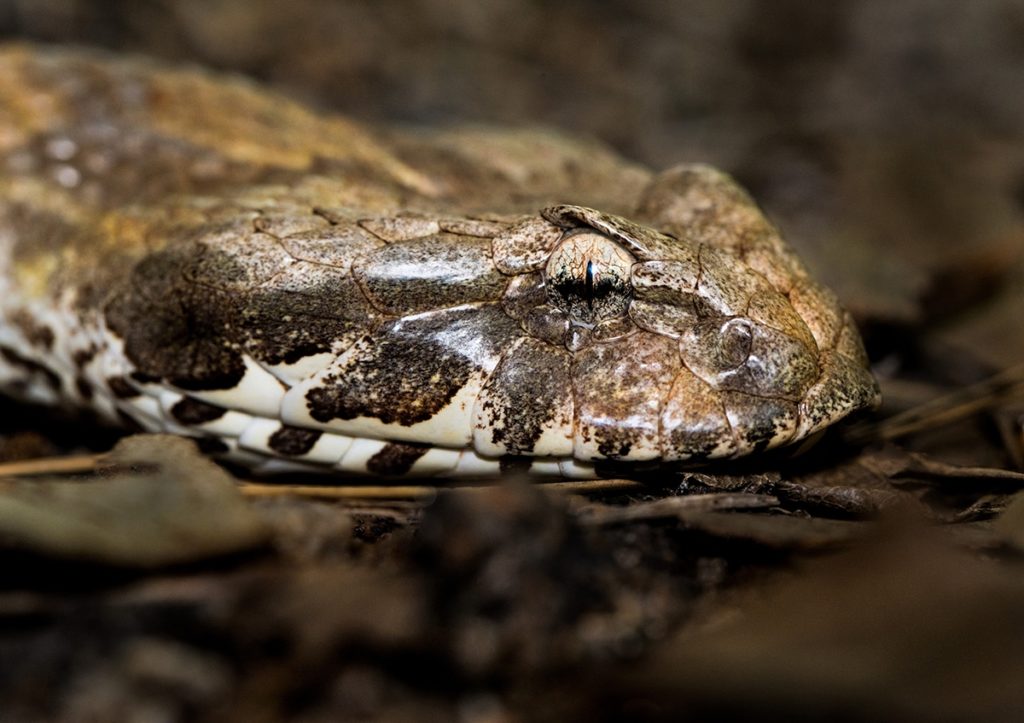
And the others !
Then come other species such as the famous pythons, some of which make them the most impressive snakes in Australia (Amethystine python or Scrub python and Olive python are the largest snakes in Australia). Pythons are absolutely not poisonous, they are constrictor snakes. They kill their prey by smothering it after wrapping around it. They can still bite to defend themselves and the size of their hooks will cause intense pain and a good wound!
The most common python in Australia is the Carpet Python, it has several subspecies specific to each region of Australia with distinctly different colors depending on the subspecies. It is this snake that likes to sneak in cereal boxes, in the roofs of homes or in the toilet bowls of large cities on the edge of the forest like Brisbane!
The largest specimens of pythons are capable of ingesting prey of an impressive size. Recently in the Mount Isa area of the QLD, an Olive Python attacked a fresh water crocodile!
There are other fairly common snakes such as Red Belly black snake or Brown tree snake. Although they are poisonous and potentially dangerous (for the Red belly black snake), they are rarely responsible for envenomations.
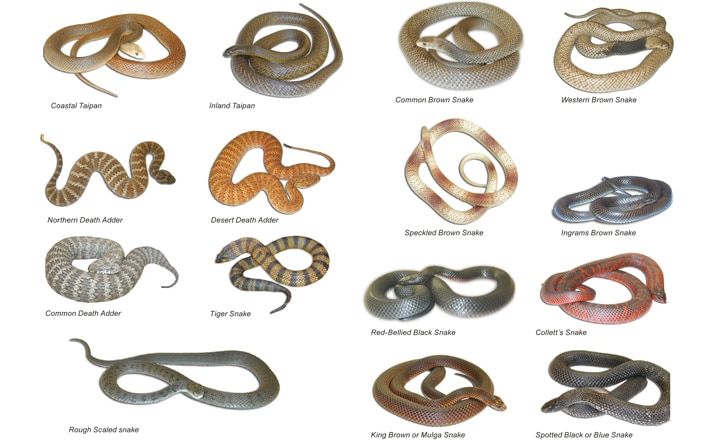
Precautions to take
Rules to observe
- When hiking, stay on marked trails and avoid walking in the tall grass if you can not see where you put your feet.
- Avoid wandering through the Australian wilderness in flip-flops or even bare feet; walking shoes are preferable…
- Snakes do not have external ears but they still have an inner ear, which means they are not deaf, but they do not really react to the human way. Your bursts of laughter or conversations will not make them run away, but they are extremely sensitive to vibrations. So you’ll be more likely to scare them by walking loudly.
- Professional snake handling training courses are available to help you learn how to catch and handle snakes. This is the best way to prepare yourself for a chance encounter, and certainly the best way to dispel snake myths.
What to do in the event of an encounter with a snake?
- Unless you are an expert, keep your distance if you see one. Some species are similar and it is better to leave them alone.
- Stay calm, avoid sudden movements and leave quietly keeping an eye on him. Most snakes only bite if they feel threatened.
- If you come across a snake in or near your home, the best thing to do is to call a snake catcher. There are professional snake catchers all over Australia who will quickly and safely remove the snake. Contact details for snake catchers can be found on Google. However, this is a paid service.
What to do in case of bite
If you are bitten by a venomous snake, whether you know the snake or not, there is a very precise protocol to follow. In most cases, this will greatly delay the spread of venom in the body, and even prevent the onset of symptoms before treatment is administered.
According to HeathDirect, all snakebites should be treated as life-threatening. Call 000 and follow the basic first aid steps -> DRSABCD.
Stay still, don’t move. This is the golden rule to follow in the event of a bite, to prevent the venom from spreading too quickly in the bloodstream. Immobilize the bitten area and keep it below heart level. Then apply a compression bandage. Neither too loose nor too tight. Get help if you’re accompanied, to keep as still as possible. If you don’t have a bandage to hand, use any nearby fabric (trouser bottoms, shirt, etc.). If you can’t use a pressure bandage because the bite is on your stomach or back, apply constant, firm pressure. Do not attempt to incise, suck or remove venom on your own.
Some statistics and numbers
- It is estimated that 3000 people are bitten each year in Australia.
- 200 to 300 of those bites require hospitalization.
- 13% Maximum of bite cases require the administration of an antivenom.
- Australia has an average of 2 snakebite-related deaths per year.
- Dogs are bitten 85% of the time on their property, compared to only 26% of cats.
- About 88% of animals bitten by a snake survive their injury.
- Australia is home to over 140 species of snake, including 20 poisonous species.
- The Eastern Brown Snake is responsible for more than 60% of snakebite-related deaths.
- The Inland Taipan is the most venomous snake in the world.
- Only 58% of WA residents surveyed can correctly identify venomous snake species.
- 29 people died from snakebite between 2010 and 2019 in Australia.
- 2018 was Australia’s deadliest year with 9 snakebite-related deaths.
- In November 2022 a person died in Gayndah (QLD) following a bite from Eastern Brown Snake.
- In September 2023, a man died in Mackay (Queensland) after being bitten by a Brown Snake.
- In October 2023, a French backpacker died in Nullawil (Victoria) after being bitten by a Brown Snake while working on a grain farm.
Unusual facts about Snakes
Anecdotes about Australian snakes
- A Snake in the Toilet: Imagine a Brisbane resident’s surprise when he discovered a python curled up comfortably in his toilet bowl! These pythons, although non-venomous, are known for their ability to get into tight spaces, often seeking warmth or prey.
- In 2013, passengers on a Qantas flight discovered a python… on the wing of the plane.
- In 2019, a three-eyed snake was discovered in the Northern Territory. Although rare, it is a common anomaly in these reptiles.
- In 2021, a woman came face to face with a 3-metre snake in the spice department at Woolworths in Sydney.
- The Stowaway: A driver in Sydney got the fright of his life when a venomous snake emerged from his dashboard mid-trip. The snake, a fearsome brown snake, had apparently found temporary shelter in the vehicle.
- The largest specimens of pythons are capable of ingesting prey of impressive size. For example, in the Mount Isa region of QLD, a python attacked a fresh water crocodile! The scene is said to have lasted over 5 hours!
Snake records in Australia
- Lightning Strike Speed: The Death Adder, one of the world’s most venomous snakes, also holds the record for the fastest strike speed among snakes. Capable of biting in less than a second, its speed is both fascinating and terrifying.
- Largest Snake on Record: The reticulated python, although not indigenous but sometimes found in Australia as an escaped pet, holds the record for the longest snake. One captured specimen measured over 6 meters, an impressive size for a snake.
Frequently asked questions
Snakes are typically most active during the summer when it is warm. Indeed, snakes dislike the cold, so they tend to hibernate during the winter. It’s also during the summer that they mate and reproduce, thus seeking a partner
Snakes are most commonly found in regions with a dry and arid or hot and humid climate. They are therefore prevalent throughout the outback (bush), from the North to the South of Australia, as well as in tropical forests and farms.
Yes, snakes can slither into your house, although it happens rarely. They mostly hide in attics, basements, garages, sheds… To avoid this, regularly clean and organize your garage, keep mice, frogs, and other rodents away from your garden, as they tend to attract snakes. Don’t leave food debris within reach. Install screens on your windows and entry doors to block common access points to your house. Be extra vigilant during flooding.
As you’ve gathered, Australia is home to many highly dangerous snake species. The most venomous is the Taipan, but the Brown snake is also highly dangerous. In fact, the Brown snake is responsible for the majority of snakebites in Australia.
Useful references and apps
If you want to learn more about snakes and reptiles there is a reference book in Australia: “A Complete Guide To Reptiles Of Australia“.
There is also a free app to help you identify snake and spider species: Critterpedia. Take a picture of the animal and the app will tell you what species it is, how dangerous it is etc.
There are also free apps for each state and territory of Australia to discover the wildlife: museumsvictoria.com.au/apps/national-field-guide-apps





















